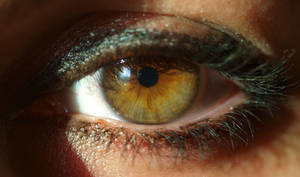Scientists in America have developed a new virus that can deliver therapeutic genes to treat retinal  diseases.
diseases.
A number of sight-loss conditions are known, including some that are genetic and which, if treated early, are potentially preventable. The stumbling block, though, is a lack of suitable "vectors" capable of carrying protective or therapetics genes to vulnerable retinal cells.
Scientists have had some success with modified viruses, but the current generation of these agents can only reach a limited number of retinal cells and administering them also tends to cause inflammation and tissue damage.
Now UC Berkeley researcher David Schaffer and his colleagues have developed a strategy to produce a generation of superior gene therapy vectors, which appear to be at least 5-fold more effective than their forbears.
The Berkeley team's approach was to take an adeno-associated virus, which has a strong track-record as a gene therapy vector, and add a short sequence of 7 genetic letters - in random locations - within the gene coding for the viral coat.
This has the effect of changing the structure of the viral surface, altering how well it can stick to certain cell types. The team injected mixtures of these viruses into the eyes of experimental animals and then, a short while later, removed the rod cells from the eyes and used DNA-copying techniques to extract the genetic sequences for any viruses they contained.
These sequences were used to produce more of the same viruses, and further rounds of selection were then performed by repeating the process a further two times. The result was a virus dubbed 7m8, which showed a strong preference for retinal rods, cones and other nerve cells.
In tests, the new vector was capable of reaching and delivering a marker gene to 5 times as many cells as other equivalent vectors.
Sight-injurious injections beneath the retina were also not required as the virus was able to make its way to the target rod cells without being mopped up by the other tissues inside the eye.
Administered to mice with a genetic sight-loss condition called retinoschisis, which is caused by a defect in the retinoschisin gene, a 7m8 virus endowed with a healthy copy of retinoschisin prevented the breakdown of the retina normally seen with this disease and normal retinal electrical activity was preserved over a 4 month study period.
Tests on monkeys also led to successful targeting of the virus to the light-sensitive cells of the fovea, the part of the retina responsible for precision vision.
In their paper, in Science Translational Medicine, the researchers speculate that the superior results might be because the alterations to the coat of the modified virus make it less likely to stick to the "wrong" cells or other structures, which "enables enhanced penetration through retinal layers."










Comments
Add a comment